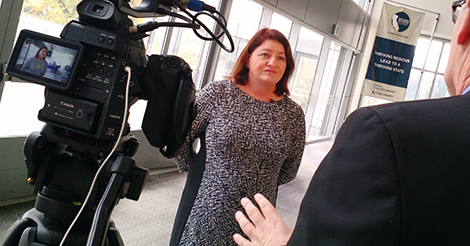The California Economic Summit is on the right track and drawing a diverse coalition together, say attendees of the fifth annual event held last month in Sacramento.
A survey of attendees showed 94 percent of respondents agreed the Summit is focused on the right priorities that balance the interests of business, labor, social equity and the environment.
“I think the lesson we learned is that there is a danger in really perpetuating two classes of citizens and the California Economic Summit really gives an opportunity to bridge that and focus on building on California for everyone,” said Eloy Ortiz Oakley, who recently assumed the post of chancellor of the California Community Colleges.
The chancellor and other California leaders opined on the importance and value of the Summit in the above video.
“The Summit brings together experts in education, in workforce, in housing, in water, all the things that really make up a better California,” Oakley added. “It's critical that now is the time that we come up with solutions that benefit all Californians.”
 While broadening the middle class and addressing California's nagging poverty issue were major themes of the Summit this year, survey respondents believe the biggest achievement of the Summit was its ability to bring together diverse and influential stakeholders to find common ground and align on priorities for the state.
While broadening the middle class and addressing California's nagging poverty issue were major themes of the Summit this year, survey respondents believe the biggest achievement of the Summit was its ability to bring together diverse and influential stakeholders to find common ground and align on priorities for the state.
“This has gone from just an idea five years ago,” said former Fresno Mayor Ashley Swearengin, who has been part of the Summit since its inception. “Could we actually get people from around the state that would work together to balance the three E's [economy, environment, equity] but also to balance the regional diversity of our state? What may work well in San Francisco is not going to work well in Fresno and how do we create a framework that allows for the diversity of regions to really come forward and custom make solutions at the local in the regional level. It's working.”
The work of the Summit's Action Teams and Cross-Team Collaborations has involved literally thousands of Californians since the Summit started five years ago.
But the work is not yet done. And nearly nine in ten respondents agreed that the Summit plays a vital role and should be repeated in future years.
“I really think that, after five years, you've seen the fruits of a lot of work, a lot of investment, a lot of dialogue and sometimes tension. But what you have seen today are some really amazing conversations, ideas and people stepping forward to implement those ideas. That's a credit to the Summit,” added Paul Granillo, president and CEO of the Inland Empire Economic Partnership.
In order for the state to truly expand its middle class and address poverty, the Summit developed the One Million Challenges and integrated them into the agenda of the event and the year-round work of the Action Teams:
- Train one million more workers to meet California's growing skills gap
- Build one million more housing units to reduce the pressure caused by the state's critical housing shortage
- Capture and save one million acre-feet of water to address California's chronic water issues.
“We've come to conclusion in California,” said Jim Mayer, President and CEO of CA Fwd, which along with the California Stewardship Network has developed the Summit. “We're a blue state in a red nation. And we're explicitly exploring triple bottom line answers, things that are good for the economy and good for social equity, and meet our standards — high standards — for environmental sustainability. It's not about one over the other. It's about moving all three. So if we can bring together leaders from the regions around a triple bottom line, that's what gets people excited.
“This is about governing ourselves to the future we want.”

